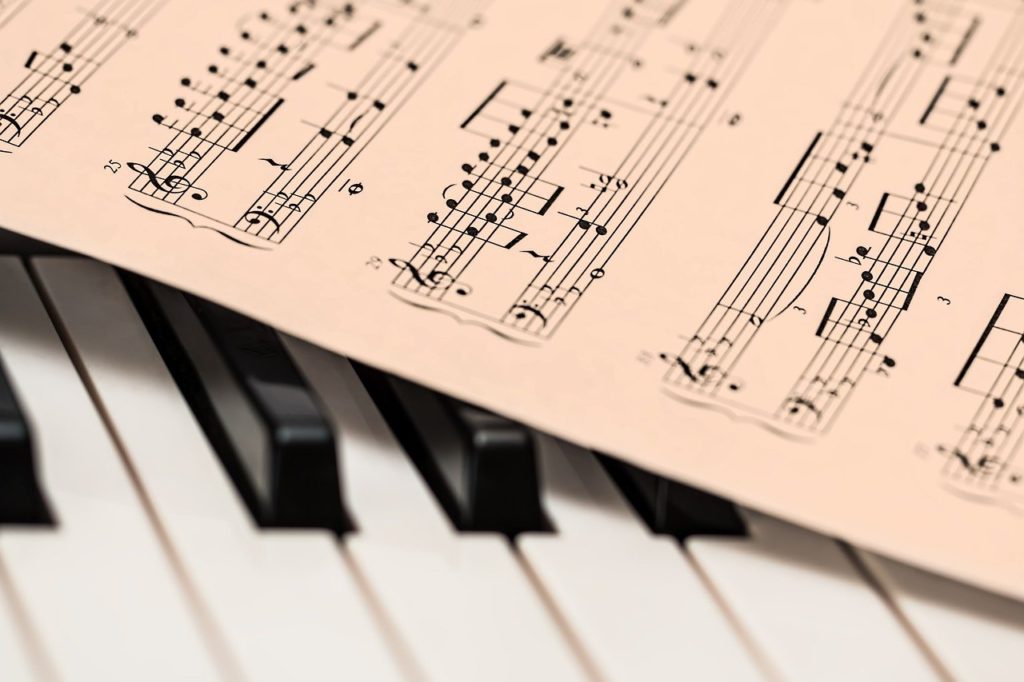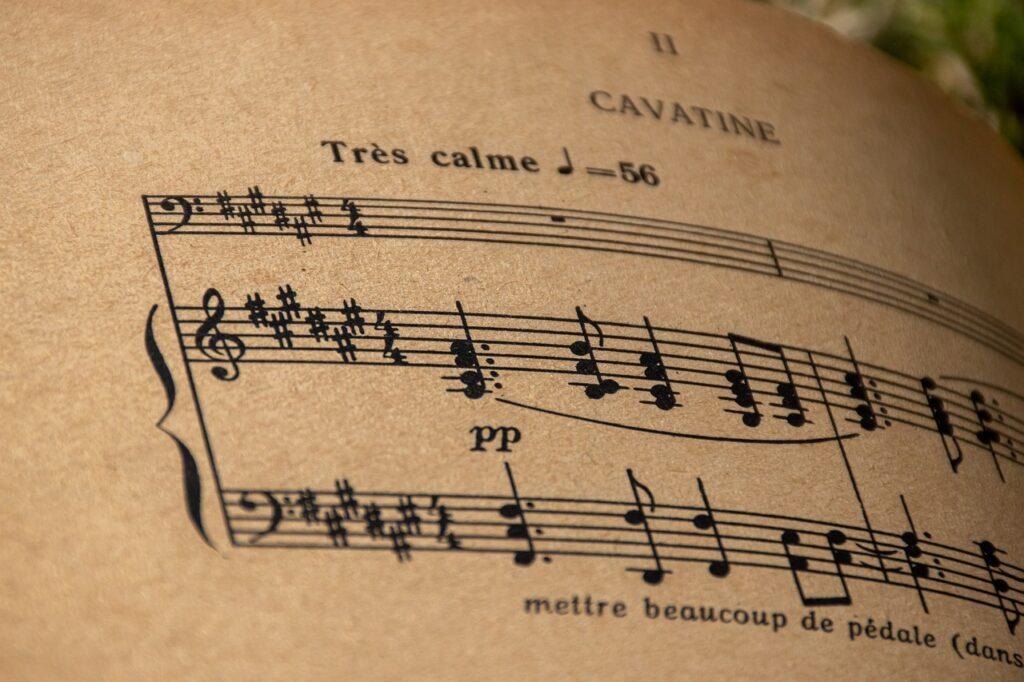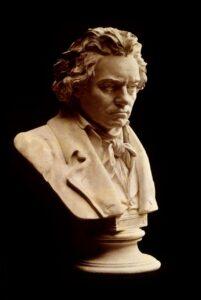Estimated reading time 3 minutes
Table of Contents
Introduction
“What purpose do accidentals serve in reading sheet music?” Sharps, flats, and naturals (collectively called accidentals) grew out of a problem that needed to be fixed in the mediaeval music notation. The music theorists of the time slapped their fix onto the preexisting notation system, and that fix is still with us to this day. However, having confused generations of budding musicians, the results of the fix leave a lot to be desired. Read more to answer the question, “What purpose do accidentals serve in reading sheet music?”
This post uses music terms. For definitions, see the Glossary at the end of the article.
The Purpose Accidentals Serve in Reading Sheet Music: The Gamut
Mobile users: for best results reading the examples, tilt your screen 90o to the right.

“What purpose do accidentals serve in reading sheet music?” Their purpose is tied to the fact that sharps, flats, and naturals evolved later than the music staff. This has as much to do with music theory as it does with music notation and has links to Guido d’Arezzo’s solfege system.
- Simply put, the medieval theorists had seven notes lettered: A, B, C, D, E, F, G. In addition, they had an extra note for Bb (B flat). They called B the “hard B” and Bb the “soft B”.
- This explains why the flat sign looks like a lower-case B, because it started out as the note Bb. These notes, sung with the help of Guido’s Solfege system, made up the “gamut” of notes.
- The word gamut began life as a musical term. It signified the lowest note gamma-ut, ut being a solfege syllable that they later replaced with do. Therefore, the word gamut meant the full range of medieval notes: A, Bb, B, C, D, E, F, G.
Then, the singers screwed everything up when they started singing the equivalent of C#/Db, D#/Eb, F#/Gb, and G#/Ab.

Musica Ficta Helps to Explain the Purpose Accidentals Serve in Reading Sheet Music
“What purpose do accidentals serve in reading sheet music?” Their purpose comes directly from the need for more notes in the notation system.
- The medieval theorists called the four extra sharp/flat notes musica ficta, or “fictional music”, because they existed outside of the gamut. The current practice of calling the white keys on the keyboard naturals and the black keys accidentals stems from this time. They literally considered the black key notes to be accidents.
- The singers could sing the musica ficta notes, but the score didn’t notate them. Around 1600 AD, symbols representing sharps, flats, and naturals began to appear.
- Flat notes used the soft B symbol (b). The flat sign lowers any note by a half step. The natural sign and the sharp sign (#) grew out of the sign representing the hard B. The sharp sign raises a note by a half step while a natural sign cancels out a sharp or flat.
By the late eighteenth century, key signatures (the sharps or flats to the left of the time signature) came into use. Key signatures help to de-clutter the score, so you don’t have to read too many accidentals.

Concluding Thoughts to “What Purpose Do Accidentals Serve in Reading Sheet Music?”
“What purpose do accidentals serve in reading sheet music?” The medieval theorists cooked up accidentals to fix a problem with their theory and notation. This added four extra notes that they needed for their music. However, because of the white key semitones (i.e., no black keys between E & F or B & C), the system of accidentals ended up being asymmetrical. This makes the whole system harder for musicians to understand.
Here’s a tip: If you focus on what each accidental does, it helps make things less confusing:
- Sharp signs: raise any “white key” note by a half step (the next key to the right on the keyboard)
- Flat signs: lower any “white key” note by a half step (the next key to the left on the keyboard)
- Natural signs: cancel out any sharps or flats (always a white key on the keyboard)
If you know where accidentals come from, it makes their purpose clear. Hopefully, it’ll also make how they work a little less confusing.
Related Posts
- Why Do Minor Keys Sound Sad to Me?
- Do I Really Have to Learn Music Theory to Learn How to Play Piano?
- What Are the Small “>” Signs Above or Below the Notes?
- How Can Legato Notes Be Played Staccato?
- Why Do Pianists Occasionally Play Their Hands at Different Times as They Perform?
© 2023 Geoffrey Keith
Join me for in-person or online lessons today!
Back to the All-Purpose Music Tips and Topics category blogs page
Glossary
The Spectacular US Star Spangled Banner [Lyrics, Song, & Video]
Do you want to know the words to the spectacular US Star Spangled Banner? Would you like to learn how to sing or play it? In this post, you’ll get the essentials: 1) all four verses for The Star Spangled Banner song lyrics, 2) a video of Whitney Houston’s version of the song, and 3) easy-to-read shape note sheet music with a sing along song track. Keep reading to learn the American national anthem lyrics and music. Estimated reading time 3 minutes.
Read MoreThe 7 Best Iconic Riffs That Make People Want to Play Guitar
Do you want to play guitar? According to “The Talent Code,” an important aspect of learning an instrument is called “ignition.” What’s ignition? It’s a crystalizing experience where a person hears a song or sees someone playing and says, “I want to do that!” There are many great riffs out there, but I have selected seven of the best, most iconic, riffs spanning five decades. I hope one of them inspires you to play guitar. To learn more, keep reading “The 7 Best Iconic Riffs That Make People Want to Play Guitar.” Estimated reading time 3 minutes.
Read MoreWhy is Classical Music Interpreted Differently from Pop Music? Part 3
“Why is classical music interpreted differently from pop music?” Interpretation has a very important role in performing classical music. This doesn’t mean that interpretation can’t be important in pop music. However, classical artists seem to be very aware of the process of how to interpret a piece of music. You can be too. Read more to learn how it works. Estimated reading time 2 minutes.
Read MoreWhat Is an Adverb? Learn About Amazing, Adaptable Adverbs
Do you want to know how adverbs work? They are amazingly versatile words that can impact many parts of speech within a sentence. It’s critical that writers, songwriters, and poets know how to use them. Keep reading “What Is an Adverb? Learn About Amazing, Adaptable Adverbs” to find out what they are and how they work. Estimated reading time 2 minutes.
Read More



